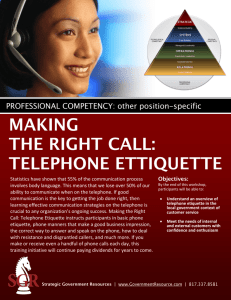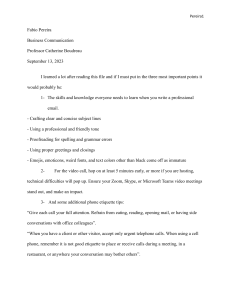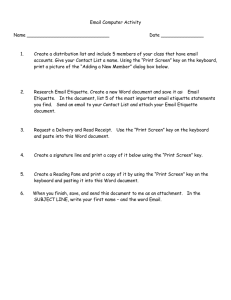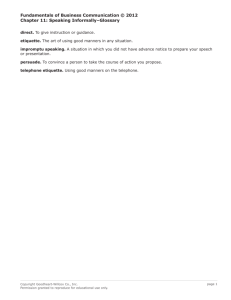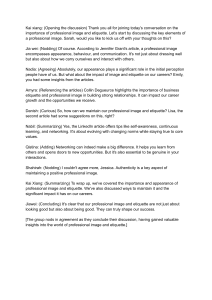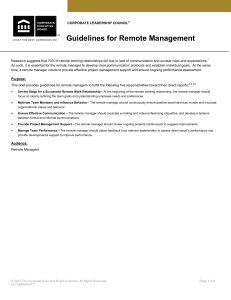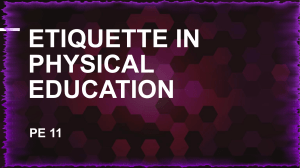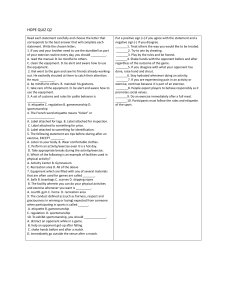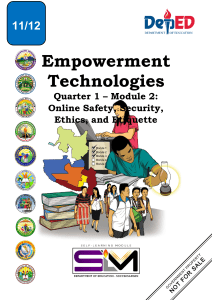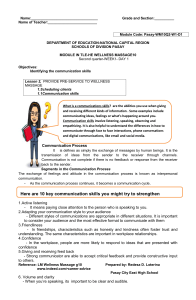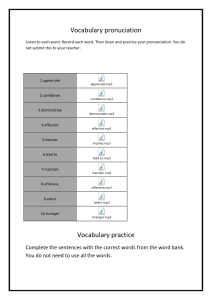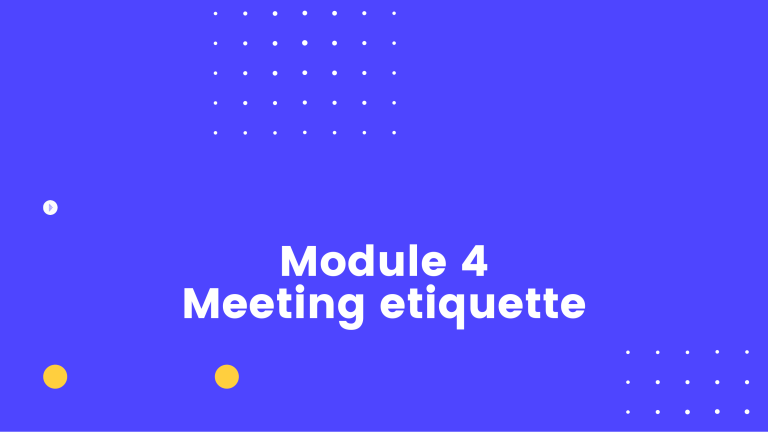
Module 4 Meeting etiquette Introduction A meeting is a group communication in action around a defined agenda, at a set time, for an established duration. Meetings can occur face-to-face, but increasingly business and industry are turning to teleconferencing and videoconferencing options as the technology improves, the cost to participate is reduced, and the cost of travel including time is considered. Purpose to inform to persuade/influence to gather information to discuss/brainstorm to take action to decide Meeting Agenda About Helps define your purpose in advance Seating arrangement Minutes of meeting is an official record of the proceedings of a meeting. Minutes help in understanding the deliberations and decisions taken at the Meeting. There is no restriction format or language for recording Minutes of meeting. Minutes kept in accordance with the provisions of the Companies Act can serve as evidence in Court of Law. MOM Format Minutes of meeting should state the serial number and type of the Meeting, name of the company, day, date, venue and time of commencement of the Meeting. In addition, a minutes of meeting must also specify the following: Details of Participants Election & quorum (if applicable) Discussion points (as outlined in the agenda) Thanks & closing of the meeting Meeting etiquette Before - agenda and meeting information sent in advance, keep reference material ready, book meeting room in advance, if some members are attending online, ensure teleconference or videoconference has been arranged and communicated well in advance, book appointments if necessary, equipment check Meeting etiquette During - seating is on same level, don't attend phone calls, don't eat or drink (only water/coffee/tea allowed), don't interrupt - verbal & physical movements, pay attention, make notes if necessary After - thank everyone, work on deliverables as agreed in the meeting Types of Meeting Formal & informal meetings Status meetings Planning meetings Board meetings/Governance meetings Problem solving meetings
